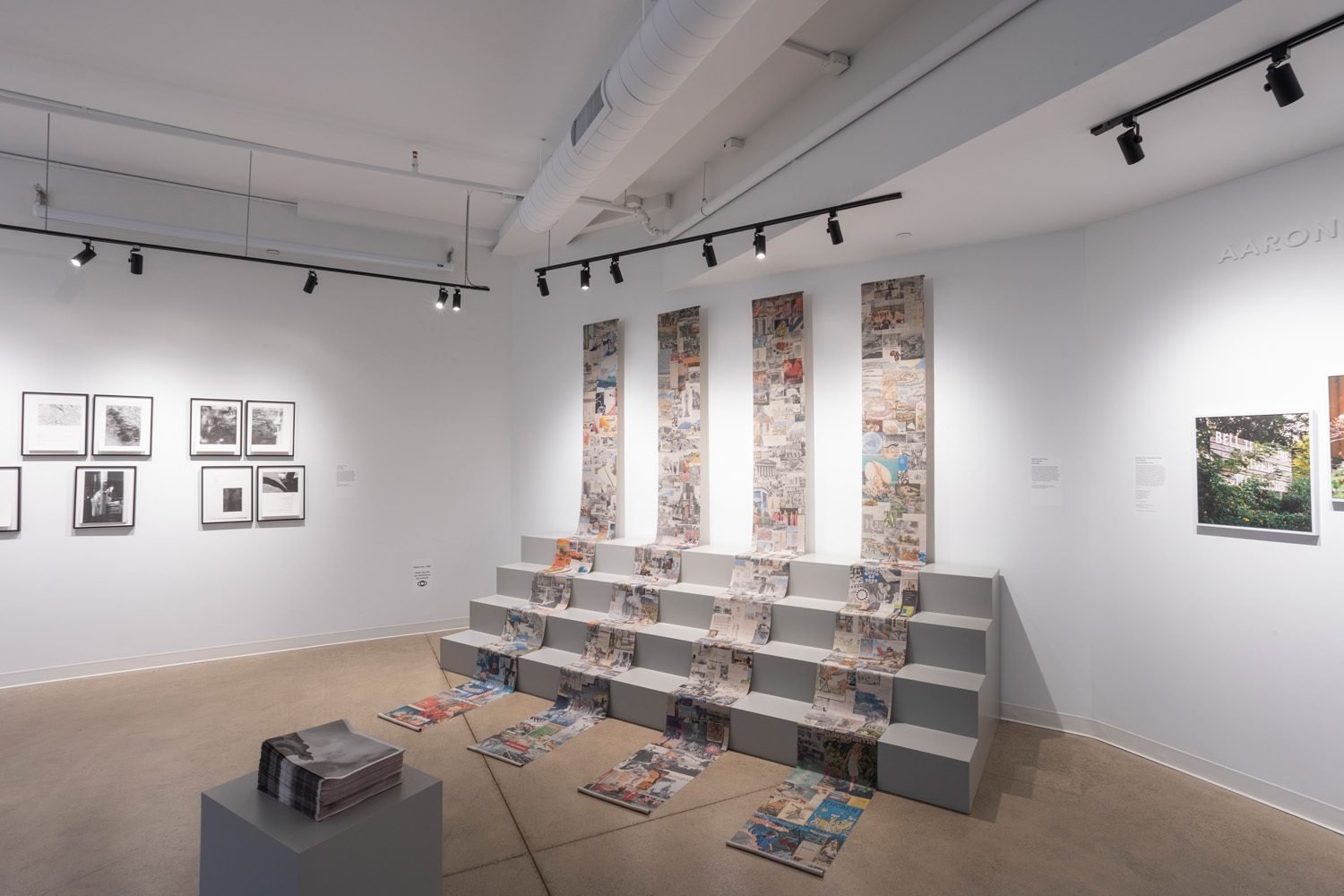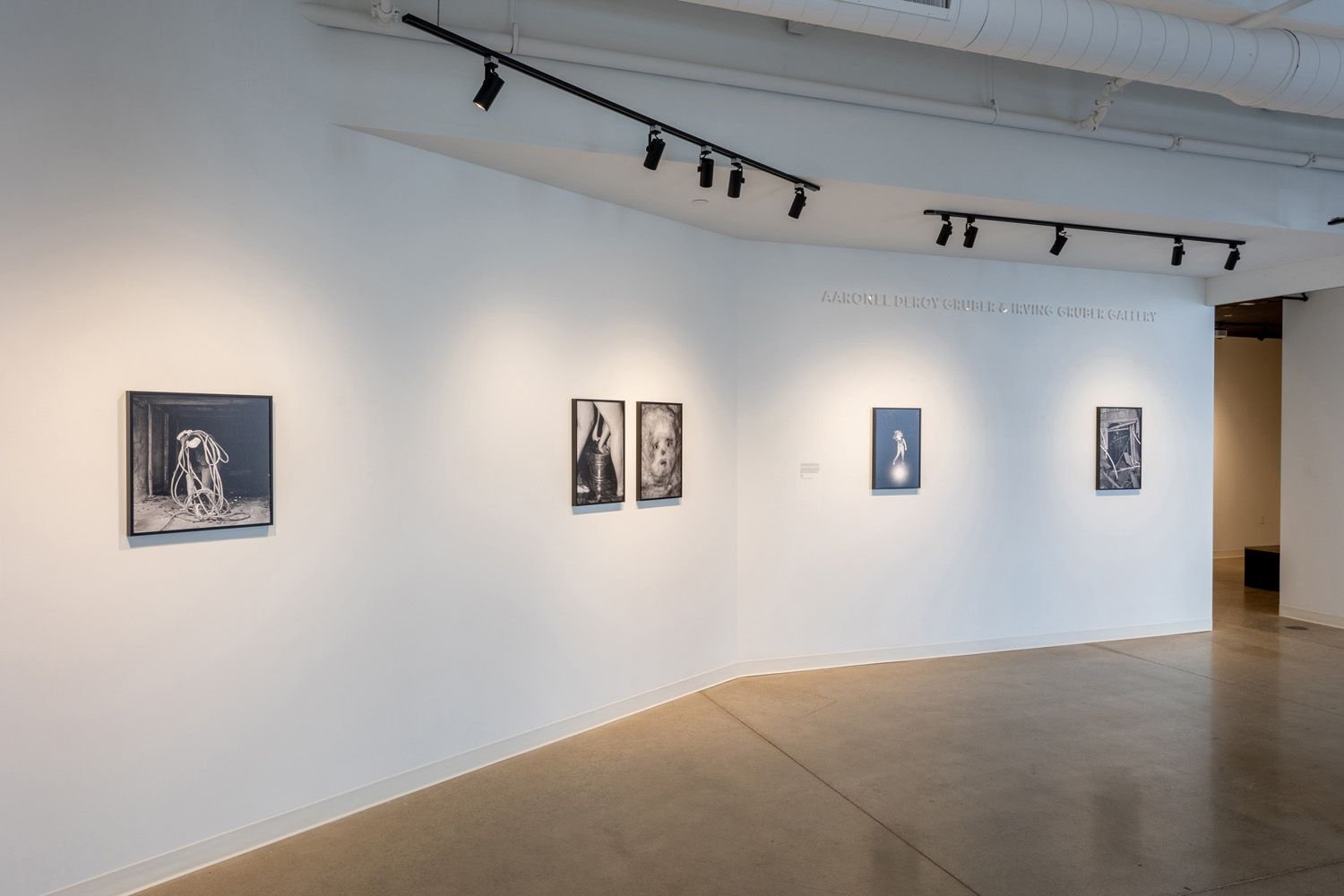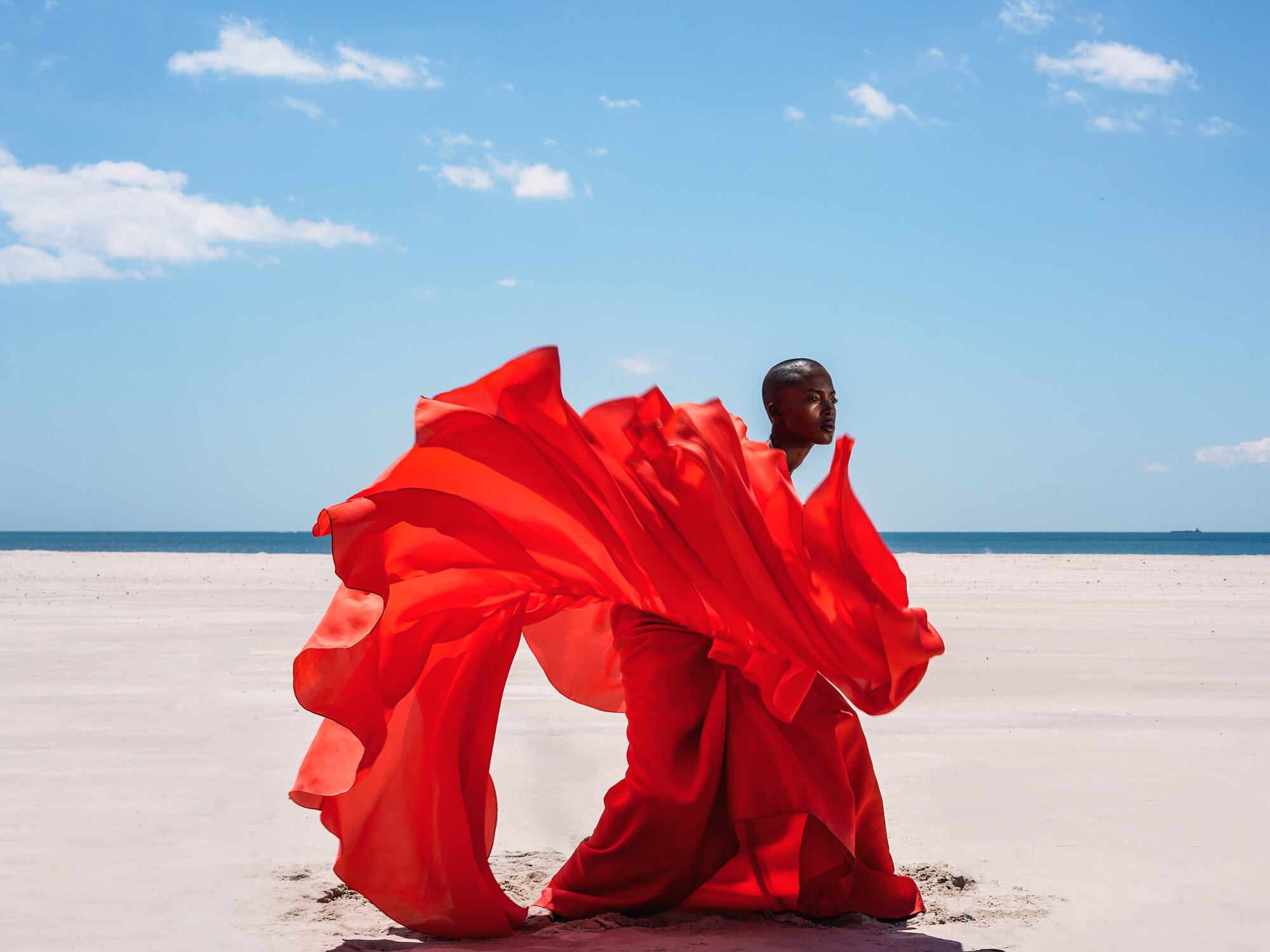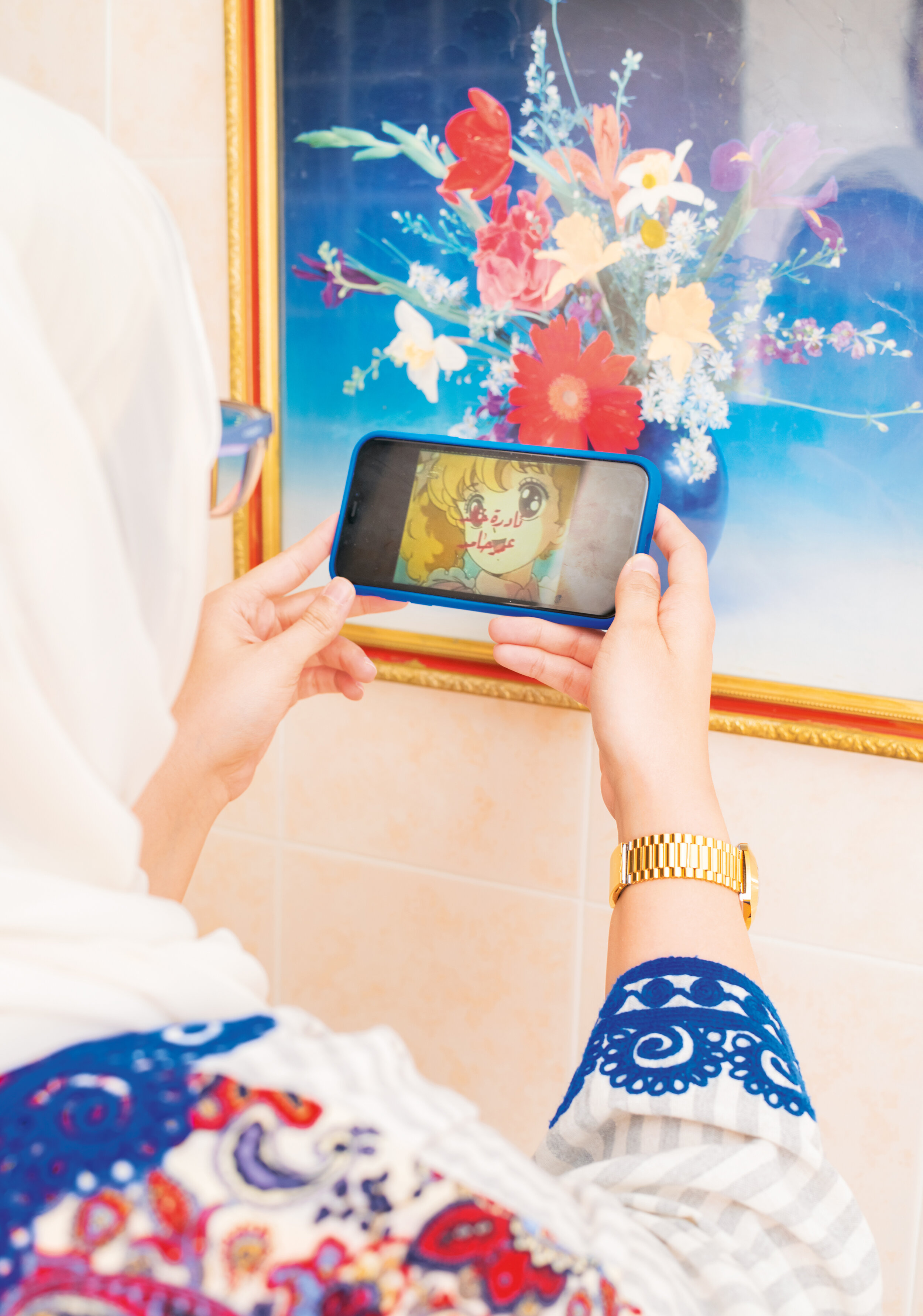Chris Levine, 'Lightness of Being', 2008. Courtesy Sotheby’s
Since the late 60s and 70s, with the more widespread establishment of photography departments within museums, major museum retrospectives and monographs often influence commercial value. This relationship between museums and auction houses is complex, especially around the reappraisal of women photographers. What do you see as some of the challenges and opportunities of this ongoing relationship?
I think it's a really good point. And context is so key. When you look at the photo markets, we talk about New York, Paris, London, and arguably New York has the strongest market; by size, volume, but they also have had a history in museums with photo curators. Compared to the UK, MoMA had its first curator in 1940, whereas Tate Modern had its first photography curator in 2009. So, you have this significant disparity between these two locations.
There’s an ecosystem. And arguably, there are more dedicated photo museums and galleries in Paris and New York than in London. So, this museum creation affects the market. I don't feel like we're at a loss here in London, but we're a bit behind, and we have to catch up. And I think that explains the type of work we see in London compared to New York or Paris. You know, you see the bigger names, the Ansel Adams’, the Edward Weston’s, the super high-value works in New York, and maybe that super high value Man Ray being sold in Paris. And in London, it can happen, but less so - it's also the same with single-owner sales, you don't often see these here. There’s been a really strong push and effort from museums to show photography, so hopefully, it’s changing.
As our conversation continued, we specifically discussed the need for greater representation of women artists, both within museum programming and commercial spheres:
Looking at photography in a broader context is so important in the wider art market. It’s having those conversations and showing contemporary collectors who don't collect photography how important it is that many women artists use photography to document their work. So, I think that side of museum shows focusing on women is important. If you think of performance artists like Marina Abramović, Ana Mendieta, or Helena Almeida – they were not purely photographers, but photography was a big part of their practice. So, I think it's more interesting for collectors to have those broader dialogues. I'm not a fan of siloing photography and keeping it separate. I think it's nice to live with and experience art together; there are dialogues between periods and people.
NFTs have been in the news lately but are controversial due to the harmful environmental impact of crypto technology. In April 2021, Sotheby’s held its first NFT sale. Part of their appeal in an art market context is the trackability of information inherent in the NFT. Brandei commented on this evolving area:
As a company, we are putting a lot of time, effort, and resources into it. I'm still trying to get my head around NFT's, but I want to learn. I think what's interesting for us is to capture that tech crowd, who don’t normally transact in the traditional categories, and translate that interest into a broader sense of collecting. People I've spoken to who are very knowledgeable about NFTs say it caters to that potentially younger generation of collectors who are experienced-led in their spending. I don't think it's the end of what we do with physical, two-dimensional, three-dimensional artworks - I think it would be nice if they can coexist.
In the last year or so, I've noticed very different models of auction house such as Greenhouse Auctions, for example, which actively pursues philanthropic goals as part of its business model. And during the last year, we've seen private commercial galleries fundraising for COVID relief funds and Black Lives Matter. I wondered if you could say a few words about how you try to align your values with your work at Sotheby's.
It’s tricky because I have a bottom line, and we're not a charity. So, you want to have personal integrity in the work that you sell, but you also have to make money. So, it’s trying to find that balance.
Last year I auctioned a photograph by Misan Harriman that he took of a woman holding a sign saying, ‘Why is ending racism still a debate?’ He shot that at one of the Black Lives Matter protests in July here in London. I feel like you have to do things carefully, sensitively, and really think about it. And I felt like that was a good moment, and all the sale proceeds from that photograph benefited blood cancer charity Anthony Nolan. The sale had that charitable side, so it felt meaningful, and that was good to do.
It’s hard because you can't please everyone, but you have to be really careful with anything political, not that this should be political, but how some people view politics. But then you could also argue that art is always political,but as a traditional auction house, I think we have to be careful what we do and what we align with. But the company does a lot of charitable support and involvement.
We’re definitely selling more and more women photographers. For us, we sell where there is demand, not that we react 100% to the market – but unless museums, galleries start showing more women, you won’t see that filter through to the market.
Investing in early career artists is also integral to creating a healthy market. Firstly, please could you talk a little about some of your favorite places to discover new contemporary photographers? And secondly, what are some of the factors you look for to ensure that an ‘emerging’ artist, of any age, holds their value in the art market.
I'm a big fan of the Photographers’ Gallery, and they do a really good job of having a program that profiles big names but also emerging or overlooked names. I also love TJ Boulting. My favorite place to discover new artists is FOAM, and the show they do every September, which coincides with Unseen.
Where else would I go? I do look a lot at Instagram. I feel like in the past year, with the pandemic, I've got a lot of really nice things and met amazing photographers through social media.
For me, what I personally look for, it needs to be something that's different from anything you've seen before. If you think of Richard Mosse, when I first saw his installation at the Venice Biennale in 2013, you just had never seen anything like that before. So, what's your USP? What makes you special and stand out? I look for that if I buy young works myself, but also, for Sotheby's. It’s a tricky balance because I do think emerging artists should first have a solid gallery program.
In the last year or so we have seen increased discussion around the politics of photography, including the legacy of colonialism within photography. I wondered if any of that critical debate has translated into the art market. For example, there are many great collecting initiatives in India and China, which rarely get any coverage in the Western media. Could you talk a little about Sotheby's global strategy and how you engage with such markets?
It’s hard because we’re a small global department. I feel like we're making progress, and we want to do more. We have a big seat in Asia, and you do sometimes see photographs coming up for sale there. We had a beautiful selling exhibition there a couple of years ago of Fan Ho’s work. So, I think things need to change, and these conversations need to be had. I feel like it’s trickling down into the commercial side, but there's a lot of debates and conversations to have.
I know you have a particular passion for fashion photography. Many fashion photographs were originally intended for magazines and the printed page. This genre is an area that has grown significantly in the art market during the last 10 or 15 years. Can you say a little about why that genre particularly appeals to you? And perhaps some of the context for this genre’s transition into the fine art market?
What interests me a lot was there was so much technical and stylistic innovation that happened in fashion photography. So, I love that there was a development of photography through that filter and purpose, but it was always originally meant for the magazine.
So, when you look at Guy Bourdin, for example, now you get these massive posthumous prints that are huge, beautiful, luscious color. And you think, gosh, they were intended to be on a magazine. And Guy was very conscious of the gutter. So, when you know that, just wow.
But equally, some fashion photographers work better in a magazine and in a story sequence. But I think it's just so interesting because, as you say, fashion photography has really taken off in the past 10 to 15 years. And as we know, the market started in the 19th century, which came out of the book sales at auction and then went more towards photojournalism and modernism. So, fashion photography was late to the game, even though and maybe because it was part of our daily consciousness of seeing magazines.
Think of the Avedon portfolio of Paris and that whole fashion story. And like you said at the beginning, museums making monographs and portfolios changed the market. When the Met had the Avedon show in 1978, that was their first retrospective of a living photographer. And while he wasn't exclusively a fashion photographer, I love that they chose to make a portfolio of his fashion images from the late 40s through to the late 50s. And, of course, that period covered the end of the Second World War. And this idea of rejuvenation, and let's go back to fashion and glamour. Imagine being in America looking at American Vogue, seeing women in Paris dressed in new Dior, not stuck in a studio posing, but living in the fashion and having fun. So, I love all these layers that you have in fashion photography.
I think people overlook that context now. I feel fashion photography is democratic; it is by nature from its origins in magazines. The prices have gone up for the big names and depending on the scarcity of the image and so forth, but it’s still very accessible and relatable.



























